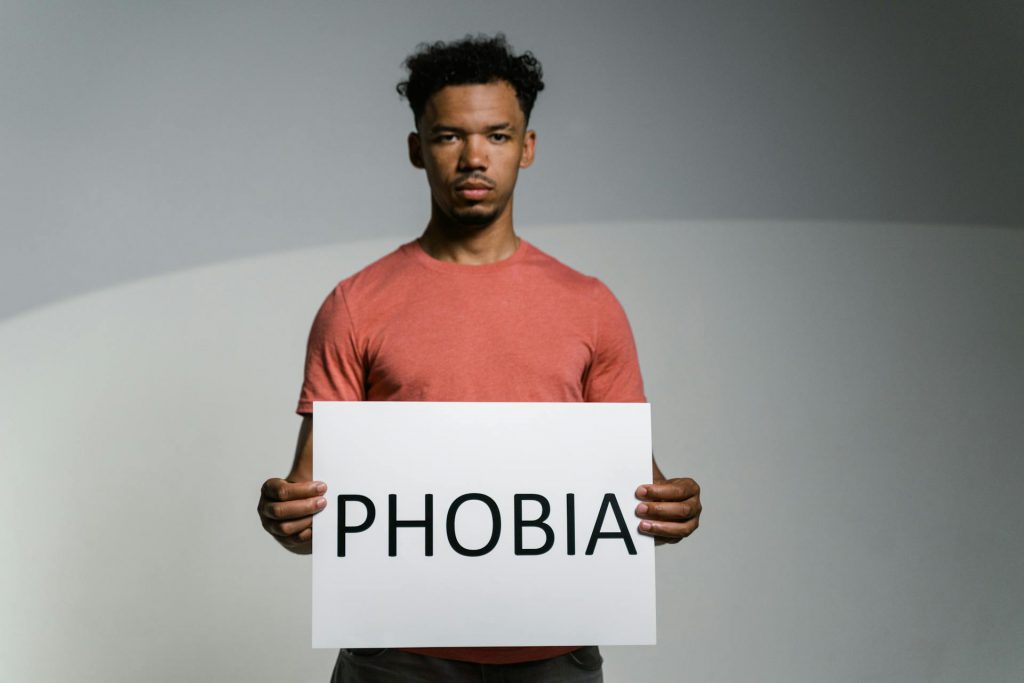Social Anxiety Therapy
Social anxiety disorder, characterized by intense fear and avoidance of social situations, can significantly impair an individual’s quality of life. Fortunately, effective therapies exist to address this condition, empowering individuals to manage their anxiety and engage more comfortably in social interactions.
Cognitive Behavioral Therapy (CBT) is considered the gold standard for social anxiety treatment.
It focuses on identifying and challenging negative thought patterns and beliefs that fuel anxiety. For example, a person with social anxiety might believe, “Everyone is judging me.” CBT helps them recognize these thoughts as distorted and replace them with more realistic and balanced perspectives. Through techniques like cognitive restructuring, individuals learn to reframe their thinking, reducing the intensity of their anxiety.
Time to feel better. Find a mental, physical health expert that works for you.
Exposure therapy, a core component of CBT, involves gradually exposing individuals to feared social situations. This systematic desensitization allows them to confront their fears in a controlled environment, reducing avoidance behaviors. Exposure can range from imagining social scenarios to engaging in real-life interactions. For example, someone afraid of public speaking might start by practicing in front of a mirror, then a small group, and eventually a larger audience. This gradual exposure helps them build confidence and reduce anxiety responses.
Social skills training is another valuable therapeutic approach, particularly for individuals who lack confidence in their social abilities. This involves learning and practicing specific social skills, such as initiating conversations, maintaining eye contact, and asserting oneself appropriately. Role-playing exercises and feedback sessions help individuals develop and refine these skills.
Mindfulness-based therapies, such as Mindfulness-Based Stress Reduction (MBSR) and Mindfulness-Based Cognitive Therapy (MBCT), are also increasingly used to treat social anxiety. These therapies emphasize present-moment awareness and acceptance of thoughts and feelings without judgment. By cultivating mindfulness, individuals learn to observe their anxiety without getting overwhelmed by it, reducing its impact on their behavior.
Group therapy can be particularly beneficial for social anxiety, as it provides a safe and supportive environment to practice social skills and share experiences with others who understand the challenges of social anxiety. Observing how others cope with similar anxieties can be incredibly validating and empowering.
Pharmacological interventions, such as selective serotonin reuptake inhibitors (SSRIs) and serotonin-norepinephrine reuptake inhibitors (SNRIs), may be used in conjunction with therapy, especially for individuals with severe social anxiety. These medications can help regulate neurotransmitters associated with mood and anxiety, providing some relief from symptoms. However, medication alone is often less effective than therapy, and a combined approach is often recommended.
Ultimately, the most effective treatment plan is tailored to the individual’s specific needs and preferences. A skilled therapist can assess the individual’s symptoms, identify underlying issues, and develop a comprehensive treatment strategy that incorporates various therapeutic techniques.
What is Social Anxiety?
Social anxiety, also known as social anxiety disorder, is a mental health condition characterized by an intense fear of social situations. It goes beyond typical shyness, causing significant distress and interfering with daily life. People with social anxiety fear being judged, evaluated, or embarrassed in social interactions.
Here’s a breakdown of what social anxiety entails:
Core Characteristics:
- Intense Fear of Judgment:
- The primary feature is a profound fear of being scrutinized or negatively judged by others.
This fear can be so overwhelming that it leads to avoidance of social situations.
- Fear of Embarrassment or Humiliation:
- Individuals with social anxiety often worry excessively about doing something embarrassing, such as blushing, sweating, or saying the wrong thing.
- Avoidance of Social Situations:
- To minimize anxiety, people with this disorder may avoid social gatherings, public speaking, or even everyday interactions like shopping or eating in public.
- Physical Symptoms:
- Social anxiety can manifest in physical symptoms, including:
- Rapid heartbeat
- Sweating
- Trembling
- Blushing
- Nausea
- Mind going blank.
- Impact on Daily Life:
- This disorder can significantly impact various aspects of life, including:
- Relationships
- Work or school performance
- Overall quality of life
Distinguishing Social Anxiety from Shyness:
It’s crucial to differentiate social anxiety from typical shyness. Shyness is a common personality trait, while social anxiety is a diagnosed mental health condition. The key difference lies in the intensity of the fear and its impact on daily functioning.
Common Social Situations That Trigger Anxiety:
- Meeting new people
- Speaking in public
- Eating or drinking in front of others
- Attending social gatherings
- Interacting with authority figures
Understanding the Causes:
The exact causes of social anxiety are complex and can involve a combination of factors:
- Genetic Predisposition:
- A family history of anxiety disorders can increase the risk.
- Environmental Factors:
- Negative experiences, such as bullying, teasing, or traumatic social events, can contribute to the development of social anxiety.
- Brain Chemistry:
- Imbalances in certain brain chemicals may play a role.
- Learned behaviors:
- Learned behaviours from care givers, can also influence the development of social anxiety.
Social anxiety is a treatable condition. With appropriate therapy and support, individuals can learn to manage their anxiety and lead fulfilling lives.
Symptoms of Social Anxiety Disorder (SAD)
Social Anxiety Disorder (SAD), or social phobia, is a pervasive mental health condition that extends far beyond simple shyness. It’s characterized by an intense, persistent fear of social situations, driven by the dread of being judged, embarrassed, or humiliated. Recognizing the symptoms is the first step towards seeking help and reclaiming control over one’s life.
Emotional and Cognitive Symptoms:
The core of SAD lies in the overwhelming anxiety experienced in social settings. This anxiety manifests in several emotional and cognitive symptoms:
- Intense Fear of Judgment: A constant worry that others are scrutinizing their every move, focusing on perceived flaws, and forming negative opinions.
- Fear of Embarrassment or Humiliation: An overwhelming fear of doing or saying something that will lead to public embarrassment or humiliation. This could range from stumbling over words to spilling a drink.
- Avoidance of Social Situations: To minimize anxiety, individuals with SAD often avoid social interactions altogether. This avoidance can lead to isolation and limit opportunities for personal and professional growth.
- Anticipatory Anxiety: The fear and worry begin long before the actual social event, sometimes days or weeks in advance. This anticipatory anxiety can be just as debilitating as the event itself.
- Negative Self-Perception: Individuals often hold deeply negative beliefs about themselves, believing they are awkward, incompetent, or unlikable.
Physical Symptoms:
The intense anxiety experienced in SAD also triggers a range of physical symptoms:
- Rapid Heartbeat: A racing heart or palpitations are common physical manifestations of anxiety.
- Sweating: Excessive sweating, even in cool environments, can be a sign of social anxiety.
- Trembling or Shaking: Visible trembling or shaking, especially in the hands or voice, can be extremely distressing.
- Blushing: Intense blushing, often accompanied by feelings of shame, is a hallmark symptom.
- Nausea or Stomach Upset: Anxiety can manifest in gastrointestinal issues, such as nausea, stomach cramps, or diarrhea.
- Shortness of Breath: Difficulty breathing or a feeling of tightness in the chest can occur.
- Muscle Tension: Tightness in the muscles, particularly in the neck and shoulders, is common.
- Mind Going Blank: Difficulty concentrating or remembering things during social interactions.
Behavioral Symptoms:
The behavioral symptoms of SAD are largely driven by the desire to avoid or minimize anxiety:
- Avoiding Eye Contact: Individuals may avoid eye contact to reduce the perceived intensity of social interaction.
- Speaking Quietly or Avoiding Talking: They may speak softly or avoid talking altogether to minimize the risk of saying something embarrassing.
- Seeking Escape Routes: In social situations, they may position themselves near exits or plan escape routes in advance.
- Using Safety Behaviors: These are actions taken to reduce anxiety, such as clinging to a familiar person, rehearsing conversations, or using substances to cope.
Recognizing these symptoms is crucial for early intervention. If you or someone you know experiences these symptoms, seeking professional help is essential. Effective therapies are available to manage and overcome social anxiety disorder, allowing individuals to lead fulfilling social lives.
Possible Physical Symptoms:
Social anxiety disorder (SAD) is not merely a psychological burden; it frequently manifests in a range of physical symptoms that can profoundly impact daily life. These symptoms arise from the body’s natural “fight-or-flight” response, activated when a person perceives a social situation as a threat. Recognizing these physical signs is crucial for understanding the disorder and seeking appropriate treatment.
Cardiovascular Manifestations:
The cardiovascular system is often the first to react to anxiety. Adrenaline surges trigger several noticeable changes:
- Palpitations and Tachycardia: A rapid, pounding heartbeat is a common occurrence, leading to chest discomfort and a sense of unease.
- Increased Blood Pressure: This can lead to headaches, dizziness, and a feeling of tightness in the chest.
- Facial Flushing: The dilation of blood vessels can result in noticeable blushing, especially in the face and neck, which can further exacerbate feelings of embarrassment.
Respiratory Distress:
Social anxiety can significantly disrupt breathing patterns:
- Shortness of Breath (Dyspnea): Individuals may feel unable to draw a full breath, leading to a sensation of suffocation.
- Hyperventilation: Rapid, shallow breathing can cause dizziness, lightheadedness, and tingling sensations in the extremities.
Gastrointestinal Disturbances:
The digestive system is highly sensitive to stress, resulting in:
- Nausea and Vomiting: A feeling of sickness and potential vomiting can occur before or during social events.
- Stomach Cramps and Diarrhea: Anxiety can disrupt normal digestive function, leading to abdominal discomfort and frequent bowel movements.
- “Butterflies” in the Stomach: A nervous, churning sensation in the abdomen is a common precursor to social interactions.
Neurological Symptoms:
The nervous system’s response to anxiety can manifest in various ways:
- Trembling and Shaking: Involuntary shaking, especially in the hands and voice, can be highly distressing.
- Excessive Sweating (Hyperhidrosis): Even in cool environments, individuals may experience profuse sweating.
- Dizziness and Lightheadedness: Changes in blood flow and breathing can lead to feelings of unsteadiness.
- Headaches and Muscle Tension: Chronic anxiety can cause tension headaches and muscle stiffness, particularly in the neck and shoulders.
- Cognitive Impairment: Difficulty concentrating, memory lapses, and a “mind going blank” are common during social interactions.
Other Physical Indicators:
- Dry Mouth (Xerostomia): A lack of saliva can make speaking and swallowing difficult.
- Sleep Disturbances: Anxiety often disrupts sleep patterns, leading to insomnia or restless sleep.
- Fatigue: The constant stress response can lead to persistent tiredness and exhaustion.
These physical manifestations can create a feedback loop, where the fear of experiencing these symptoms intensifies social anxiety. It’s crucial to understand that these are real physiological responses, not simply imagined sensations. Seeking professional help can provide effective strategies for managing both the psychological and physical aspects of SAD.
Treatment for Social Anxiety Disorder
Social Anxiety Disorder (SAD) can significantly impair an individual’s quality of life, but effective treatments are available. A combination of therapy and, in some cases, medication can help individuals manage their symptoms and lead fulfilling lives.
Connect Free. Improve your mental and physical health with a professional near you

Psychotherapy: The Cornerstone of Treatment
Cognitive Behavioral Therapy (CBT) is considered the gold standard for treating SAD. CBT focuses on identifying and changing negative thought patterns and behaviors that contribute to anxiety. Through techniques like cognitive restructuring, individuals learn to challenge distorted thoughts such as, “Everyone is judging me,” and replace them with more realistic and balanced perspectives.
Exposure therapy, a key component of CBT, involves gradually exposing individuals to feared social situations. This systematic desensitization helps them confront their fears in a controlled environment, reducing avoidance behaviors. For instance, someone with a fear of public speaking might start by practicing in front of a mirror, then a small group, and eventually a larger audience.
Social skills training is another valuable therapeutic approach, particularly for those who lack confidence in their social abilities. This involves learning and practicing specific social skills, such as initiating conversations, maintaining eye contact, and assertive communication. Role-playing and feedback sessions help individuals refine these skills.
Mindfulness-based therapies, such as Mindfulness-Based Stress Reduction (MBSR) and Mindfulness-Based Cognitive Therapy (MBCT), are increasingly used to treat SAD. These therapies emphasize present-moment awareness and acceptance of thoughts and feelings without judgment. By cultivating mindfulness, individuals learn to observe their anxiety without getting overwhelmed, reducing its impact.
Group therapy can be particularly beneficial, providing a supportive environment to practice social skills and share experiences with others facing similar challenges. Observing how others cope can be validating and empowering.
Medication: A Complementary Approach
While therapy is often the first line of treatment, medication can be helpful, especially for severe cases.
- Selective Serotonin Reuptake Inhibitors (SSRIs): These antidepressants, such as sertraline (Zoloft) and paroxetine (Paxil), are commonly prescribed for SAD. They work by increasing serotonin levels in the brain, which can help regulate mood and anxiety.
- Serotonin-Norepinephrine Reuptake Inhibitors (SNRIs): These antidepressants, such as venlafaxine (Effexor), can also be effective. They increase both serotonin and norepinephrine levels.
- Benzodiazepines: These anti-anxiety medications, such as alprazolam (Xanax) and lorazepam (Ativan), can provide short-term relief from anxiety symptoms. However, they are generally not recommended for long-term use due to the risk of dependence.
- Beta-blockers: These medications, such as propranolol, can help manage physical symptoms of anxiety, such as rapid heartbeat and trembling, particularly before performance-related situations.
Combined Treatment and Lifestyle Changes
A combined approach, integrating therapy and medication when needed, often yields the most effective results. Lifestyle changes can also play a supportive role, including:
- Regular exercise
- Adequate sleep
- Stress management techniques
- Limiting caffeine and alcohol intake
Seeking professional help is crucial for developing a personalized treatment plan. With appropriate therapy and support, individuals with SAD can significantly improve their social functioning and quality of life.
Treatment Methods Used in Therapy for Social Anxiety Disorder
Therapy for Social Anxiety Disorder (SAD) utilizes a variety of methods to address the complex interplay of thoughts, feelings, and behaviors that perpetuate social fear. The goal is to empower individuals to manage their anxiety, build social confidence, and engage more comfortably in social situations.
Cognitive Behavioral Therapy (CBT): Restructuring Negative Thought Patterns
CBT is the cornerstone of SAD treatment. It focuses on identifying and challenging distorted thought patterns that fuel social anxiety. Cognitive restructuring involves recognizing negative automatic thoughts, such as “Everyone is judging me,” and replacing them with more realistic and balanced perspectives. Therapists guide individuals to examine the evidence supporting and contradicting these thoughts, fostering a shift towards more adaptive thinking.
Exposure Therapy: Gradual Confrontation of Feared Situations
Exposure therapy systematically exposes individuals to feared social situations in a controlled and gradual manner. This process, known as systematic desensitization, helps desensitize individuals to anxiety triggers. Exposure can range from imagined scenarios (imaginal exposure) to real-life interactions (in vivo exposure). The therapist creates a hierarchy of feared situations, starting with less anxiety-provoking scenarios and gradually progressing to more challenging ones. This gradual approach allows individuals to build tolerance and confidence.
Social Skills Training: Building Confidence in Social Interactions
Social skills training addresses deficits in social competence, which can contribute to social anxiety. This method involves teaching and practicing specific social skills, such as initiating conversations, maintaining eye contact, assertive communication, and interpreting social cues. Role-playing exercises, feedback sessions, and modeling are used to enhance social skills and build confidence in social interactions.
Mindfulness-Based Therapies: Cultivating Present-Moment Awareness
Mindfulness-based therapies, such as Mindfulness-Based Stress Reduction (MBSR) and Mindfulness-Based Cognitive Therapy (MBCT), are increasingly integrated into SAD treatment. These therapies emphasize present-moment awareness and acceptance of thoughts and feelings without judgment. By cultivating mindfulness, individuals learn to observe their anxiety without getting overwhelmed by it. This allows them to detach from negative thought patterns and reduce the impact of anxiety on their behavior.
Group Therapy: Practicing Social Skills in a Supportive Environment
Group therapy provides a safe and supportive environment to practice social skills and share experiences with others who understand the challenges of SAD. Observing how others cope with similar anxieties can be incredibly validating and empowering. Group sessions often involve role-playing, social skills training, and discussions about common social anxiety triggers.
Acceptance and Commitment Therapy (ACT): Embracing Anxiety and Living a Valued Life
ACT helps individuals accept their anxiety rather than fighting it. It emphasizes identifying personal values and committing to actions that align with those values, even in the presence of anxiety. By focusing on living a meaningful life, individuals can reduce the impact of anxiety on their choices and behaviors.
Interoceptive Exposure: Addressing Physical Symptoms
Interoceptive exposure involves intentionally inducing physical symptoms of anxiety, such as rapid heartbeat or shortness of breath, in a controlled environment. This helps individuals desensitize themselves to these physical sensations, reducing their fear of them.
What to Look for When Finding a Therapist
Finding the right therapist is a crucial step in addressing mental health concerns. The therapeutic relationship is a key factor in successful treatment, so it’s essential to find someone who is a good fit. Here’s a guide on what to look for when seeking a therapist:
- Specialization and Expertise:
- Specific Disorders: Ensure the therapist has experience and expertise in treating your specific concern, such as social anxiety disorder, depression, or trauma.
- Therapeutic Approaches: Different therapists utilize various therapeutic approaches (CBT, ACT, etc.). Research these methods and choose a therapist whose approach aligns with your preferences.
- Licensing and Credentials: Verify the therapist’s credentials and licensing. Look for licensed professionals such as psychologists (Ph.D., Psy.D.), licensed clinical social workers (LCSW), or licensed professional counselors (LPC).
- Compatibility and Rapport:
- Initial Consultation: Most therapists offer an initial consultation, which is an opportunity to assess compatibility. Pay attention to how comfortable you feel during this meeting.
- Communication Style: Consider the therapist’s communication style. Do they listen actively, provide clear explanations, and make you feel understood?
- Trust and Empathy: It’s essential to feel safe and comfortable sharing personal information. Look for a therapist who demonstrates empathy, understanding, and non-judgmental acceptance.
- Practical Considerations:
- Location and Availability: Consider the therapist’s location and availability. Ensure their schedule aligns with yours, and that the location is convenient.
- Insurance and Fees: Check if the therapist accepts your insurance. If paying out-of-pocket, inquire about their fees and payment options.
- Teletherapy Options: Many therapists offer teletherapy services, which can be a convenient option. Consider if this modality suits your needs.
- Recommendations and Reviews:
- Referrals: Ask your primary care physician, friends, or family for referrals. Personal recommendations can be valuable.
- Online Reviews: Check online reviews and testimonials, but take them with a grain of salt. Individual experiences can vary significantly.
- Professional Organizations: Contact professional organizations like the American Psychological Association or the National Alliance on Mental Illness for referrals.
- Your Gut Feeling:
- Intuition: Ultimately, trust your gut feeling. If something feels off or uncomfortable, it’s okay to seek a different therapist.
- Therapeutic Alliance: The therapeutic alliance, or the bond between you and your therapist, is crucial for successful treatment. Choose someone you feel comfortable and safe with.
Finding the right therapist may take time and effort, but it’s an investment in your mental well-being.
Don’t hesitate to interview multiple therapists until you find the perfect fit.

Free consultations. Connect free with local health professionals near you.
Conclusion
In navigating the complexities of mental health, particularly Social Anxiety Disorder (SAD), it’s crucial to remember that hope and effective solutions exist. Understanding the multifaceted nature of SAD, from its debilitating physical symptoms to its insidious cognitive distortions, empowers individuals to seek appropriate support.
The journey towards managing and overcoming social anxiety is not a solitary one; it’s a process of self-discovery, resilience, and active engagement with therapeutic techniques.
The diverse array of treatment methods, including Cognitive Behavioral Therapy, Exposure Therapy, and mindfulness-based practices, offers a tailored approach to address the unique challenges faced by each individual. These therapies, coupled with potential pharmacological interventions, provide a robust framework for fostering lasting change. The importance of finding a qualified and compassionate therapist cannot be overstated. The therapeutic alliance, built on trust and empathy, serves as the bedrock for successful treatment.
Furthermore, integrating lifestyle adjustments, such as regular exercise, balanced nutrition, and consistent sleep patterns, can significantly enhance therapeutic outcomes. These holistic approaches contribute to overall well-being and strengthen the individual’s capacity to manage anxiety. It’s vital to recognize that progress is not linear. There will be moments of challenge and setbacks, but these are integral parts of the healing process.
SAD often thrives in secrecy and isolation. By breaking the silence and seeking professional help, individuals reclaim their agency and embark on a path towards greater social confidence and fulfillment. Encouragement and support from loved ones play a pivotal role in this journey, reinforcing the message that recovery is possible.
Ultimately, the conclusion of this discussion is not an endpoint but a call to action. It’s an affirmation that social anxiety, while daunting, is treatable. By embracing available resources, cultivating self-compassion, and committing to therapeutic interventions, individuals can transcend the limitations imposed by anxiety and embrace a richer, more connected life. The journey may be challenging, but the destination—a life filled with meaningful social interactions and diminished fear—is profoundly worthwhile.
Time to feel better. Find a mental, physical health expert that works for you.
Popular FAQs
What's the difference between shyness and social anxiety disorder?
Shyness is a common personality trait, while SAD is a diagnosed mental health condition. SAD involves intense fear and avoidance of social situations, significantly impacting daily life. Shyness is usually less severe and doesn’t cause the same level of distress or impairment.
What are the common symptoms of social anxiety disorder?
Common symptoms include intense fear of judgment, fear of embarrassment, avoidance of social situations, physical symptoms like sweating, blushing, and rapid heartbeat, and anticipatory anxiety.
Can social anxiety disorder be cured?
While there may not be a complete “cure,” SAD is highly treatable. With therapy, particularly Cognitive Behavioral Therapy (CBT), and sometimes medication, individuals can significantly reduce their symptoms and lead fulfilling lives.
What types of therapy are used to treat social anxiety disorder?
CBT, exposure therapy, social skills training, mindfulness-based therapies, and group therapy are commonly used. These methods help individuals challenge negative thoughts, gradually face feared situations, and build social confidence.
Are medications effective for social anxiety disorder?
Medications like SSRIs and SNRIs can be effective, especially for severe cases. However, therapy is often considered the first line of treatment, and a combined approach is often the most effective.
How long does therapy for social anxiety disorder take?
The duration of therapy varies depending on individual needs and the severity of symptoms. It can range from several months to a year or more.
How can I find a therapist who specializes in social anxiety disorder?
You can ask your primary care physician for referrals, check online directories, contact professional organizations like the American Psychological Association, or seek recommendations from friends or family.
Can lifestyle changes help with social anxiety disorder?
Yes, lifestyle changes like regular exercise, adequate sleep, stress management techniques, and limiting caffeine and alcohol can complement therapy and medication.
Is group therapy helpful for social anxiety disorder?
Yes, group therapy can be very beneficial. It provides a supportive environment to practice social skills and share experiences with others who understand the challenges of SAD.
What can I do to help a loved one with social anxiety disorder?
Offer support and understanding, encourage them to seek professional help, avoid pushing them into uncomfortable situations, and educate yourself about SAD to better understand their experience.
People also ask
Q:How to fix social anxiety?
Q:What is the 3-3-3 rule for anxiety?
Q:How to improve social skills with social anxiety?
Q:Is social anxiety a disability?
NOTICE TO USERS
MindBodyToday is not intended to be a substitute for professional advice, diagnosis, medical treatment, or therapy. Always seek the advice of your physician or qualified mental health provider with any questions you may have regarding any mental health symptom or medical condition. Never disregard professional psychological or medical advice nor delay in seeking professional advice or treatment because of something you have read on MindBodyToday.
Share this article

Let us know about your needs

Quickly reach the right healthcare Pro

Message health care pros and get the help you need.
Popular Healthcare Professionals Near You
You might also like
What is Suicide Therapy?
, What is Suicide Therapy ? Everything you need to know Find a Pro Suicide Therapy Suicidal ideation and attempts […]
What is Sex Therapy?
, What is Sex Therapy ? Everything you need to know Find a Pro Sex Therapy Sex therapy is a […]
What is Sleep Disorder Therapy?
, What is Sleep Disorder Therapy ? Everything you need to know Find a Pro Sleep Disorder Therapy Sleep disorders […]





